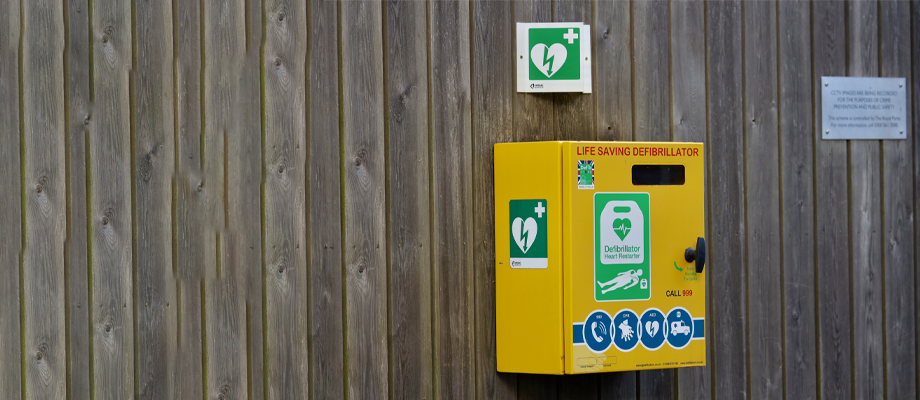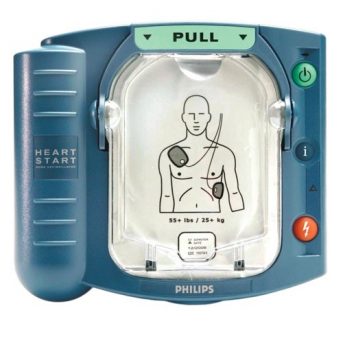
Defibrillators (AEDs): what they do, where they are and how to use them
January 4th, 2023
Since an initiative in 2009, the university has maintained a number of defibrillators across its main campuses.
Defibrillators, or Automated External Defibrillators (DEFIBRILLATORs) are portable lightweight devices that are intended for use in emergency situations in the case of a suspected cardiac arrest.
They are not effective for all cardiac emergencies but certainly can be very beneficial and life-saving in a small proportion of acute emergencies.
Who can use a Defibrillator?
Defibrillators can be used by anyone, you don’t need to be trained. Our first aiders have familiarisation training as part of the first aid course but the devices have been designed for members of the public to use.
You may have noticed devices in shopping centres, railway stations and the like – these are not just for the staff, they are for any of us to use.
To feel more confident of how the devices work, please see this four-minute video clip from St John’s Ambulance which shows you how to use a defibrillator.
How they work
A defibrillator acts to restart or correct the heart rhythm by applying an electric shock to the chest. It detects the electrical activity of the heart and gives automated instructions to the operator on what to do.
The automatic diagnostic sequence ensures that they will only operate under appropriate circumstances so please don’t worry about delivering a shock accidentally or in the wrong situation, the device will not let that happen.
What do I need to do?
To have the best chance of being effective, it is crucial to get a defibrillator to a casualty who is having a suspected cardiac arrest as soon as possible. The quicker life-saving first aid and a defibrillator are used on a casualty, the better the outlook for survival.
If you are a first aider, you will know to make an assessment and if appropriate, commence CPR, request a defibrillator to be fetched and to have the emergency services called.
If you are not a first aider, summon a first aider (for details see local first aid notices) and know where your nearest defibrillator is so you can bring it to the casualty or send someone to fetch it.
To get started with the defibrillator, remove it from its case, press the green button and follow the voice prompts.
If a defibrillator is used, i.e. the pads are applied to a casualty, we will need to get them replaced, please notify h&s@nottingham.ac.uk. Any incident on campus, please report online.
Where are they?
Information about your nearest defibrillator should be on first aider notices in your building and the full list is given here [Workspace login required]. Note that UoN Security carry defibrillators on their response vehicles.
Our defibrillators are checked on a regular basis by local staff. If you pass by one and it’s beeping or appears damaged or is missing, please report to h&s@nottingham.ac.uk.
Comments are closed.
Other

Need news? See you on SharePoint
After 14 years of service, Campus News is being retired as the university’s staff news platform. […]

Roads and car parks closed for refurbishing work
As part of ongoing road improvements at the university, works will be taking place to resurface […]


